Adapted Baby-Led Weaning for Feeding Challenges with Jill Rabin, MS, CCC-SLP/L, IBCLC
- How children with feeding challenges can succeed using the adapted baby-led weaning approach in combination with the right specialists.
- How adaptive baby-led weaning may help to motivate and improve fine motor abilities of babies with Down-syndrome and many other feeding difficulties.
- The sort of considerations that parents should be aware of when they start the feeding transition with their babies with Down-syndrome.
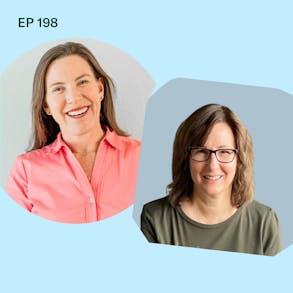
LISTEN TO THIS EPISODE
Episode Description
Is baby-led weaning unsafe for babies with feeding difficulties? Is it even attainable to successfully transition babies with special needs into solids by using the BLW approach? In this episode pediatric speech pathologist and international board certified lactation consultant Jill Rabin joins me to talk about the adapted baby-led weaning approach that she developed to safely help babies with feeding challenges be successful with the baby-led weaning approach.
About the Guest
- Jill developed the adapted baby-led weaning approach in 2010 for those babies who have feeding challenges or special needs.
- Jill frequently works with assisting infants with Down syndrome, preemies, and babies who may have more challenges with feeding, to transition to the breast or to solid foods.
- She is currently co-authoring a book with Gill Rapley, who is the founding philosopher of the baby-led weaning movement and will talk about how baby-led weaning can work from an adaptive standpoint for children with feeding challenges.

Links from this Episode
- Follow Jill Rabin on Instagram @jillrabinablw
- Check out her Website (will be up in the Spring)
- Gigi’s Playhouse
- Chicago Feeding Group Course
- Breastfeeding and Down Syndrome Book on Julia’s Way
- Baby-Led Weaning with Katie Ferraro program with the 100 First Foods™ Daily Meal Plan, join here: https://babyledweaning.co/program
- Baby-Led Weaning for Beginners free online workshop with 100 First Foods™ list to all attendees, register here: https://babyledweaning.co/baby-led-weaning-for-beginners

Latest Episodes
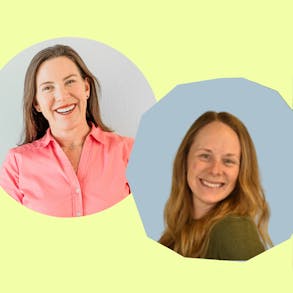
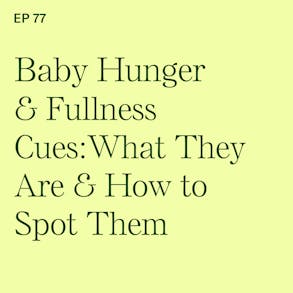
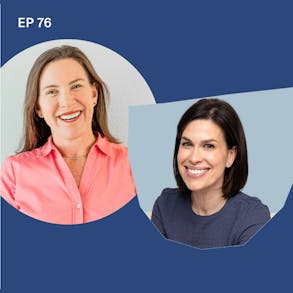
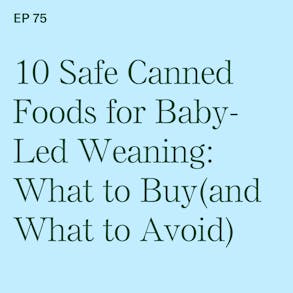
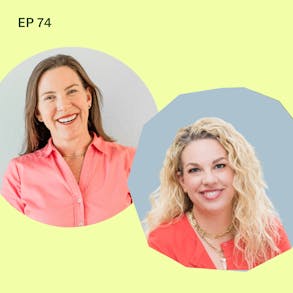
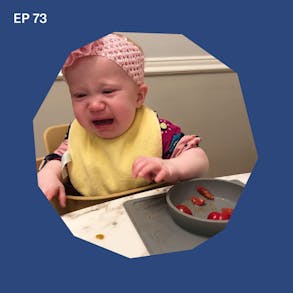
Jill Rabin (1m 3s):
Adapted Baby led. Weaning is an approach that follows the same principles of traditional baby led weaning. But with the population that I work with, when there are motoric challenges, we do some adaptations to help those babies learn to self feed.
Katie Ferraro (1m 16s):
Hey, there I'm Katie Ferraro, Registered Dietitian college nutrition professor and mom of seven specializing in baby led weaning here on the baby led weaning made easy podcast. I help you strip out all of the noise and nonsense about feeding, leaving you with the competence and knowledge you need to give your baby a safe start to solid foods using baby led weaning. Well, Hey guys, welcome back. Today's guest is a very special guest interview with a leader in the field of baby led weaning. Her name is Jill Rabin. She is a speech language pathologist. She's a feeding therapist. She's also an international board certified lactation consultant and Jill created adapted.
Katie Ferraro (2m 2s):
Baby led Weaning is actually an approach to baby led weaning and a system that she's been using since 2010 to help children who have feeding challenges. So Jill works with babies primarily like the majority of her caseload is babies with Down's syndrome, but she also works with premature babies. She works with babies who have challenges with feeding and transitioning either to the breast, through her work in lactation, or as they make that transition to solid foods. So Jill's here today to talk about how children with feeding challenges can succeed using her Adapted Baby led weaning approach. She's also, co-authoring a book with Jill Rapley.
Katie Ferraro (2m 43s):
So Jill Rapley, as many of you may know, is the founding philosopher of the baby led weaning movement. Jill Rapley is the co-author of the original baby led weaning book, but she's, co-authoring a book with Jill Rabin today's guests, and they're going to be working on how baby led weaning can work from an adapted standpoint for children with feeding challenges. So I'm very excited to welcome Jill Rabin to the podcast, talking about Adapted Baby Led Weaning for Feeding Challenges.
Jill Rabin (3m 15s):
Thank you, Katie. I'm a big fan, so I'm really flattered and thrilled to be on here today.
Katie Ferraro (3m 20s):
I am a big fan. It's kind of like a mutual love Fest here. Before we dive into some of the specific areas of your practice and the different types of babies that you work with. Could you tell us a little bit about your professional background and how you came to specialize in this really unique area of healthcare?
Jill Rabin (3m 35s):
Yes, I am a pediatric speech pathologist and board certified lactation consultant. And I have been working primarily with infants to three-year-olds for over 35 years. I do have a private practice in the north suburbs of Chicago and I additionally work one day a week as a lactation consultant in a hospital. Most of what I do is working with complicated breastfeeding diets and working with children with feeding challenges in transitioning to solids using baby led, weaning adapted baby led weaning, which is an approach I developed in 2010 and using responsive feeding techniques. And I'm also very involved in the down syndrome community about seventy-five percent of my caseload is babies with down syndrome.
Jill Rabin (4m 15s):
And I volunteer for two organizations, one called Gigi's Playhouse, where I run a group for infants to three-year-olds with down syndrome, focused on language. And I also volunteer for Julius Way, which is another organization. And we do a monthly free zoom meeting for moms of babies with Down syndrome who are pumping or trying to breastfeed. So I'm very involved in that community as well.
Katie Ferraro (4m 38s):
Wow, that's amazing. I have been following your work for a while. I have to be honest. The first time I heard the term Adapted Baby led weaning, I just thought it meant combo feeding. And I know that you're working on a project with Jill Rapley and you'll tell us a little bit about that at the end, but we've spoken on the podcast at length about the limitations of trying to do spoon-feeding in combination with baby led weaning. So I thought adapted was prepared to work like all in on baby-led weaning. I was dead wrong adapted is for babies with feeding difficulties. So my apologies for not understanding adapted baby-led weaning, could you tell us in your own words, how do you define adapted baby led weaning, and maybe tell us a little bit about the origins of this approach, which you created in 2010
Jill Rabin (5m 17s):
Adapted Baby. Let me know. We used to refer to it as modified baby led weaning, but Jill Rapley and I, before we started to collaborate on a book that will be out in the spring and we'll talk about that later, we decided to change it to adapted because modified has meant many different things in the feeding world. And it's often meant a combination of doing spoon-feeding and baby-led weaning. So adaptive baby-led weaning is an approach that follows the same principles of traditional baby-led weaning, where we believe a hundred percent, that babies are to feed themselves. They do not need to be fed by someone else, but with the population that I work with when there are Motoric challenges where babies have difficulty getting their hands to their mouth, or might have any kind of specific feeding problem, what we do in adaptive baby led meaning as we do some adaptations to help those babies learn to self-feed.
Jill Rabin (6m 6s):
And some of those adaptations include using a silicone feeder. So it has a handle that they can actually bring that to their mouth, to enable them to feed themselves. And we do something called responsive facilitation. So what that means is we will hold the baby by the wrist and then hold the feeding device that's in their hand and help guide it to their mouth. We never put that device in the baby's mouth unless the baby does a positive tilt, which is something from Marsha Dunn Klein's work and gives us permission to put help, get that food item into their mouth. So we use those bridge devices until the babies develop sufficient skill, that they just start to bring food to their own mouth. So the difference with adaptive baby-led weaning is we use those bridge devices.
Jill Rabin (6m 46s):
We also use something called the sensory motor approach, which is an approach by two speech pathologists by the name of Lori Overland and Robin Walsh, both amazing therapists. And what we do is why we are working on helping these babies learn to sell feed. We look at their oral motor and feeding skills and we do different exercises and things to work on skills. So we might be doing purees from a spoon, but we're working on chewing with, in other ways, by using specific devices, like something called a G tube to work on the baby's jaw strength and to get ready for tunes. So we, we use sensory motor approach in combination with adaptive baby-led meeting.
Katie Ferraro (7m 27s):
So Jill and area know that we are both passionate about is focusing on foods that Babies can eat. Like I get incensed when I see lists of who baby led weaning may not work for. And it's like super arbitrary. And it says things like babies who have cleft lips or cleft palates babies that have limb differences, always babies that have Down Syndrome was on that list because we've had lots of other experts on the show who I'm like, please come on and disprove that statement. And they'll tell us, yes, all sorts of Babies can succeed at self-feeding. They might meet feeding milestones at different times. It might not be with the same types of foods. They might need adaptive equipment, but when it comes to Down Syndrome, why do other feeding resources say that babies with Down Syndrome might not be a good fit for baby led weaning?
Katie Ferraro (8m 7s):
And could you share about how you're finding that it does work for these children?
Jill Rabin (8m 11s):
I think a lot of professionals think that children with down syndrome cannot do this approach because very often I think that they look at the diagnosis and they don't look at the child. We do know that children with Down Syndrome are medically complex. They're often at risk for having issues with feeding and swallowing and you know, with heart issues and, and reflux and all the different medical complications they can have that obviously can complicate feedings and we want to do it safe. But I think that we have to look at the skills of the child first and really doing adaptive baby led. Weaning does incredible things for babies with down syndrome because they're motivated by food. It works on hand to mouth. It works on core strength. It works on midline orientation where they're holding things with both hands in the middle.
Jill Rabin (8m 53s):
The kids with Down Syndrome tend to use one hand or the other, giving them big foods to hold onto, encourages them to use two hands. It works on vision, looking down at the tray to pick something up, coming back up. It works on so many skills. I feel that lots of my babies with Down Syndrome that do this approach, their fine motor abilities are significantly better when it comes to play. Because for six months, they've literally been bringing food to their mouth where in years past children with Down Syndrome or spoonfed by someone else, and often stuck on a period food texture, weight past two, sometimes up until three years of age. So with adaptive baby-led weaning, they're getting tons of chewing input, holding strips of food, increasing jaw strength, learning to move food in their mouth.
Jill Rabin (9m 38s):
In my opinion, it makes them safer eaters because they really can manage a lot of different food textures and shapes because of all the practice they're getting from six to 12 months, I will say though, that with children, with Down Syndrome, they should be followed by a feeding therapist who is very knowledgeable in terms of what skills you need in order to break down specific foods. Because we want to make sure that what we're using with those babies is safe for them. And that they're able to sufficiently break it down prior to swallowing to decrease the likelihood of aspiration or choking. So that is an important part of adaptive baby led weaning is using a lot of those therapeutic techniques to make sure that the baby is developing the skills they need to break down the food safely.
Katie Ferraro (10m 20s):
So Jill, let's break that down because not all feeding therapists are pro-baby-led weaning and not all speech language pathologists in particular are, I would say you are certainly a leader in the field. You've created this approach. You've proven that it works day in and day out through your work, but not all speech language pathologists feel the same way. Would you talk a little bit maybe first why not all speech language pathologists are probaby LED WEANING, and then what do parents, if they aren't feeding therapy and want to try more self-feeding with a baby that has, let's say down syndrome and they're working with someone who is old school and wants to spoonfeed them until two. How do parents deal with,
Jill Rabin (10m 52s):
I think it's starting to changeable appetites is an Instagram account that started because of my work, the two moms that started it, both have little ones with down syndrome and they started this account. It's all about babies with down syndrome or any type of feeding challenge that does baby led weaning and adaptive baby led weaning. And I do think it's starting to change. And I do think younger therapists are starting to our newer therapists are starting to really see that this method is very helpful. And the way that I do it is very systematic. And I will tell you that when I first started doing this, I started this in 2010. And I would say between 2010 and 2015, whenever I lectured on this topic, I would be warned by peers in the field that would say, you know, that people think you're crazy that you're doing this, that they think it's dangerous, what you do.
Jill Rabin (11m 38s):
And I used to laugh because it's something I did every day. I do it very safely. I'm obviously very knowledgeable about skills and what babies need to do in order to do this approach safely. And I always would say, well, let them see my presentation and see the videos of the babies I work with. And I think that's going to change their minds. And I, I do actually, I have a course online that some therapists have been taking. So I think that that's been very helpful because I systematically break down how I do this approach and the book that's coming out in the spring that Jill Rapley and I are collaborating on really goes into great detail as to how this works. I will mention, I do have a chapter called child directed feeding. That's available.
Jill Rabin (12m 18s):
It's a free download from a book called breastfeeding and down syndrome. That's on that Julia's way website, it's Juliasway.org. So anybody who, if they want a little, like a very peripheral description of what I do, it's in there. You can download that for free. That's from 2019. I've evolved way more since that time, but it really does talk a lot about the approach. So anybody who wants that information right away, they can look there, but the book will be coming out and describing it. But I do think that it's starting to change. And I think the more people that see the results of this method and how beneficial it is for babies with down syndrome, the more likely they are going to start to use this.
Katie Ferraro (12m 56s):
Awesome. And I'll be sure to link to that chapter on the show notes page for this episode on BLWpodcasts.com for parents that want to check that out. And there are so many parents listening who are SLPs, who are OTs and feeding therapists who are registered dietitians. There really is this new generation behind what is not a woo-woo parenting FAD like baby led weaning has a real, incredible body of research to support it as a viable and safe alternative to traditional spoon-feeding. And I think that's what we're really seeing with the research that comes along with it. In addition to the practice of clinicians and practitioners like yourself, we also have to have the research to show that it is safe and that it is effective and nutrition.
Katie Ferraro (13m 38s):
We're always concerned about growth faltering and nutrient gaps. And are they going to get enough iron? They're not going to have growth faltering. They are going to get enough iron. They are going to grow properly by learning how to eat real foods. So there's this combination of needing to have the research, but also needing to have the practitioner. So thank you for leading the next generation of SLPs who are like, whoa, hold up. Yes, I can do baby led weaning. Cause I know how it is with my SLP colleagues. A lot of you guys are sticking your neck out there to say, what do you mean a baby can't feed themselves. Look at this compelling evidence, right? Seeing is believing Jill's Instagram. You guys is amazing. It's Jill Rabina B L w the a is for adapted and all of the babies on there. They've consented to allow Jill to share videos of their children with feeding difficulties, feeding themselves sometimes from their first bites.
Katie Ferraro (14m 21s):
And it's really amazing. Could you share a little bit more about your Instagram and your philosophy because it's really different than a lot of other baby led weaning Instagram accounts.
Jill Rabin (14m 29s):
I decided to start it after collaborating on this book with Jill and when Jill was on board with what I was doing and actually the way that Jill and I wound up doing this book is I did a webinar for Japan for a down syndrome organization on adapted baby led weaning. And they actually asked Jill to review my webinar to make sure it was legit and that she was on board with what I was doing. And after she viewed that webinar, she contacted me and we got on a zoom call and she said, you know, you really need to do something about this because what you're doing is it's amazing. You know, these kids are doing great with this method and you need to do this before someone else comes along. And they're going to grab that idea. And you're the one who started this. And I started doing this in 2010 after I viewed a DVD of Jill's on the approach that a colleague gave to me.
Jill Rabin (15m 13s):
And I was just blown away by how these babies could feed themselves. And I thought, okay, I have to take this idea and see how I can adapt it to the kids that I see that a feeding challenges. And that's where this all came about. So I started that, started doing it in 2010 and it's way more evolved. Now. I feel like I've got it down. It's much more systematic in how I'm doing that. And on my Instagram, what I'm trying to show is I'm showing you all the people that I'm working with and how I'm doing this and how not only be as baby led weaning good from a developmental perspective and working again on eye-hand coordination and core strength. And self-feeding, it's working on jaw strength. It's making babies become intuitive and independent eaters.
Jill Rabin (15m 53s):
We do know that babies with down syndrome are at risk for being overweight and having issues with diabetes and the, in a multitude of health issues. So what I love about this approach is it's, it's addressing all of those things and it's really helping this population so, so much. And I think it's just amazing for families to be able to do this and do what everybody else is doing. I do the same thing with breastfeeding because lots of parents with babies with down syndrome are discouraged from breastfeeding and, and many babies with down syndrome can get to the breasts. They just need the right intervention.
Katie Ferraro (16m 25s):
Could you speak a little bit more for the parents of babies who have Down Syndrome? What sort of considerations that you would suggest they be aware of as they start the transition? You mentioned one thing that we tend to start a little bit later at seven or eight months as compared to six months, any other things to be aware of for down syndrome?
Jill Rabin (16m 41s):
Yes. A hundred percent. I think one of the most important things is that when your baby has a diagnosis of down syndrome, you need to be working with people from the time that your baby is born. I actually start working with some families if they have a prenatal diagnosis and I'm counseling them on breastfeeding because we do want to get these babies to the breast, if we can, because the oral facial exercise that you get from breastfeeding and obviously how breast milk impacts the baby is hugely important. But for solids, part of my course, when I teach about adaptive baby led weaning is we want these babies getting started with a physical therapist from the get-go. So they can develop a really strong, gross motor foundation that is so important, getting tummy time, practicing all those foundational skills, and also having a feeding therapist who is adept in creating what's called a pre-feeding program.
Jill Rabin (17m 27s):
So we work on all the different skills of tongue movement, closed mouth, resting, posture, all the things that we need to help that baby develop the foundational skills they're going to need for starting solids. I can tell you that babies that I start with from birth very often, I can actually start the transition with them. At six months. I have two right now that I'm working with with down syndrome that I did not have to wait until seven or eight months because they've been working with a PT. They're doing great with sitting and we're already doing solid, starting at six months. So I do feel at that first six months is preparation for transitioning to solids for this population.
Katie Ferraro (18m 3s):
And that's fabulous because I know you also work with pediatric dieticians on all of your teams as well. And I think what you mentioned, especially about with the risk for overweight and obesity in down syndrome population, it certainly doesn't help if we're force-feeding arbitrary amounts of pureed food to a baby who can essentially feed themselves.
Jill Rabin (18m 19s):
Yes. And I, I work with one dietician in particular. She's amazing. She really is on board with baby led weaning. She gets it. She understands that sometimes, you know, weight gain, isn't huge in the very beginning with this approach, but she's on every case with me. So we're always monitoring it and being careful, we do find sometimes, and this is anecdotal information that we do find sometimes with babies with down syndrome that are breastfed, that sometimes we are seeing more issues with iron deficiency in the latter part of that first year. So we're super careful with that. And we also struggle a lot with constipation in this population because of the low muscle tone. We see so many problems with constipation. So we are addressing that from the get-go in terms of what we recommend food wise for this population to try to prevent it
Katie Ferraro (20m 27s):
So I really appreciate that. You're stressing that it's okay to have variability in some of these parameters. No two babies are the same. And just because a baby has a diagnosis, it's important that we don't look at the diagnosis. We need to look at the individual child and their abilities
Jill Rabin (20m 41s):
A hundred percent. And we also know that children with down syndrome tend to be on the tinier side. So why do we want to blow them up if they're good? We don't want them expanding horizontally if they're not expanding vertically. So the dietitian is a very important part of,
Katie Ferraro (20m 53s):
So I know we've been talking a lot about Jill's. You guys were talking to Jill Rabin, the Adapted Baby led weaning lady. And she's talking about a project that she's working on with Jill Rapley, the founding philosopher of the baby led weaning movement. The coauthor of the original baby led weaning book, Jill and Jill are working on a book that's going to be coming out in spring 2022, Jill, Rabin, is there anything you can share about that forthcoming book? We'll obviously love to help you guys promote it because I think it's such an important topic, but how did the project come to be that you came to write this book with Joel Rapley about Adapted Baby led weaning.
Jill Rabin (21m 26s):
It came about after she contacted me because she was asked to review that webinar that I did. And she said that I really needed to do something about it. And I said, well, I'd be happy to write a book, but I really couldn't do that by myself. I just think it would be too much. I said, unless you would want to help me. And she said, I thought you'd never ask. And that's really what started the whole thing for us. And that started, I want to say we started writing it late spring of this past year, and we have been working diligently and we actually handed the manuscript in, in December, December 17th. And Jill was, she was, she got me working hard and
Katie Ferraro (21m 59s):
she said she stayed straight up like three nights in a row past midnight. I was like, dang, you guys are serious.
Jill Rabin (22m 3s):
I would work all day. And I was up till one or two in the morning because, you know, since she's in the UK, I would get my work done late at night and send it to her and she'd be working on it by the time I'd wake up, it'd be the afternoon in the UK. And she would send me all her stuff and it worked very, very well. And, and it's amazing that we got it done. And I think we both learned a lot in this process as well.
Katie Ferraro (22m 23s):
And I think that parents of children who might've been told otherwise that they can't do baby-led weaning are really going to benefit from this as well. But also this whole new wave of a feeding therapists and credentialed feeding professionals who are learning from you and your experiences, you're putting it in writing. You have your systems down based on your practice. Like that's the only way for us to improve and move forward is to learn from those who have gone before us. So I'm really looking forward to your book. Could you name some of the other maybe diagnoses or feeding challenges that you see that parents might be like, oh yeah. Maybe this approach would benefit my child as well, even if it's not a down syndrome diagnosis.
Jill Rabin (22m 59s):
So not only. So I've worked with children with other syndromes, I've worked with a little boy with something called Noonan's syndrome. That was vomiting when he was being splinted, purees, and man that he flipped quickly with, with using an Adapted Baby led weaning approach. I use it for kids who might have any type of feeding aversion, where they're reverse aversive to the breast or bottle in their first six months. I use it with kids who might have sensory issues, the, and really picky about foods and big gaggers and, and not, you know, really struggling with that transition. I do find this approach works great for kids whose parents start with spoonfeeding and the kids are really not doing well with it. And when we flip it to the baby being in control and the baby feeding themselves, we see a huge difference.
Jill Rabin (23m 41s):
So kids with aversion, kids with other syndromes, kids with tongue ties, this approach is very, really good for kids with any kind of structural issue like cleft palate, because we're working on so much jaw work and tongue mobility. So the way that we're shaping foods and using strips does a lot of work for the jaw and the tongue. So it really works for anybody. And I also sometimes use adaptive baby led weaning for parents who are really tentative and terrified to do baby led weaning. I would much rather that child be feeding themselves, holding a silicone feeder than someone putting food in their mouth with a spoon. But I do want to stress that neuro-typical babies, no one needs to use the silicone feeder. It's really just a bridge device until the baby can start to pick up food and scoop food with their hand to bring it to their mouth.
Jill Rabin (24m 27s):
But really this, this approach can benefit anybody.
Katie Ferraro (24m 29s):
Well, Jill, tell us where we can go to learn more about the work that you're doing now ahead of the book that will be coming out, that we're all excited about.
Jill Rabin (24m 36s):
You can go to my Instagram at Jillrabinablw I also have a website under construction. It's www.Jillrabin.com and that should be up and running sometime in the spring. I had to put it on pause just because of working on the book. I also have a course on the Chicago feeding groups website, but it's all on adaptive baby led meaning it's a two hour webinar. It's really inexpensive. It's a great thing for parents and professionals to get a good idea of, of the approach, how it started, how it works, those are all places that you can find information. And I think I also mentioned the Julia's way website, where the book can be downloaded in my child, directed feeding chapters in there as well.
Katie Ferraro (25m 18s):
Well, Jill, thank you so much for your time and sharing all of your expertise and your experiences with us. I really appreciate it. Thanks. Well, I hope you guys enjoyed that interview with Jill Rabin. I love her adapted approach to baby led weaning. I'm so glad that she is bringing this knowledge, not only to future therapists, but also directly to parents of children with feeding challenges. You can check out all of the resources that Jilll mentioned in today's episode. If you go to the Shownotes, which you can find at blwpodcast.com/198, thanks so much for listening and I'll see you next time.
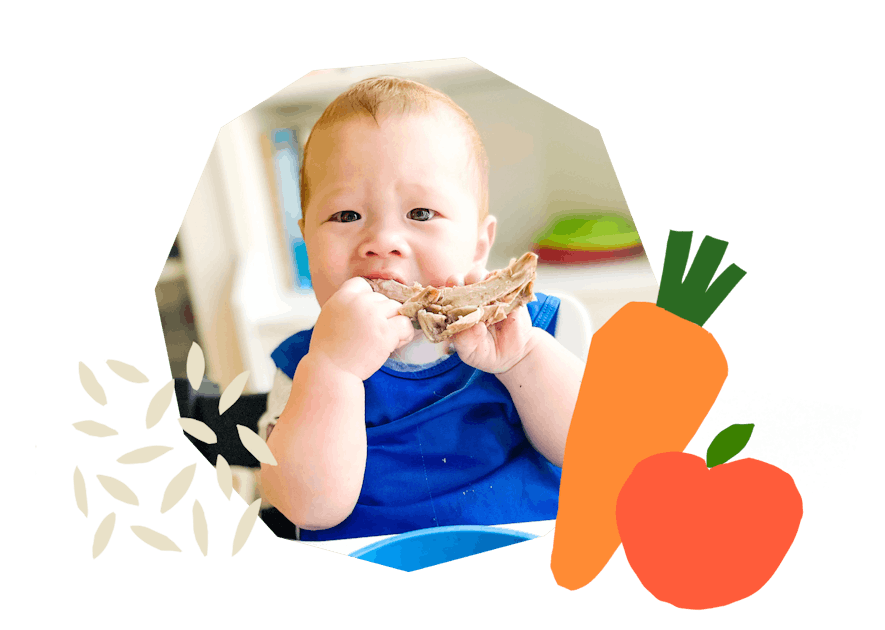
The Program Baby-Led Weaning with Katie Ferraro
A step-by-step digital program for starting solid foods safely and navigating the original 100 FIRST FOODS™ meal plan with baby-led weaning.
 EXPERT-LED, PROVEN APPROACH TO EATING REAL FOOD
EXPERT-LED, PROVEN APPROACH TO EATING REAL FOOD CONCISE VIDEO TRAININGS TO MASTER BABY-LED WEANING
CONCISE VIDEO TRAININGS TO MASTER BABY-LED WEANING 100 FIRST FOODS DAILY MEAL PLAN WITH FOOD PREP VIDEOS
100 FIRST FOODS DAILY MEAL PLAN WITH FOOD PREP VIDEOS
Baby-Led Weaning for Beginners Free Workshop
Is your baby ready to start solid foods, but you’re not sure where to start? Get ready to give your baby a solid foundation to a lifetime of loving real food…even if you’re feeling overwhelmed or confused about this next stage of infant feeding.
Get baby-led weaning recipes and tips delivered to your email inbox.

